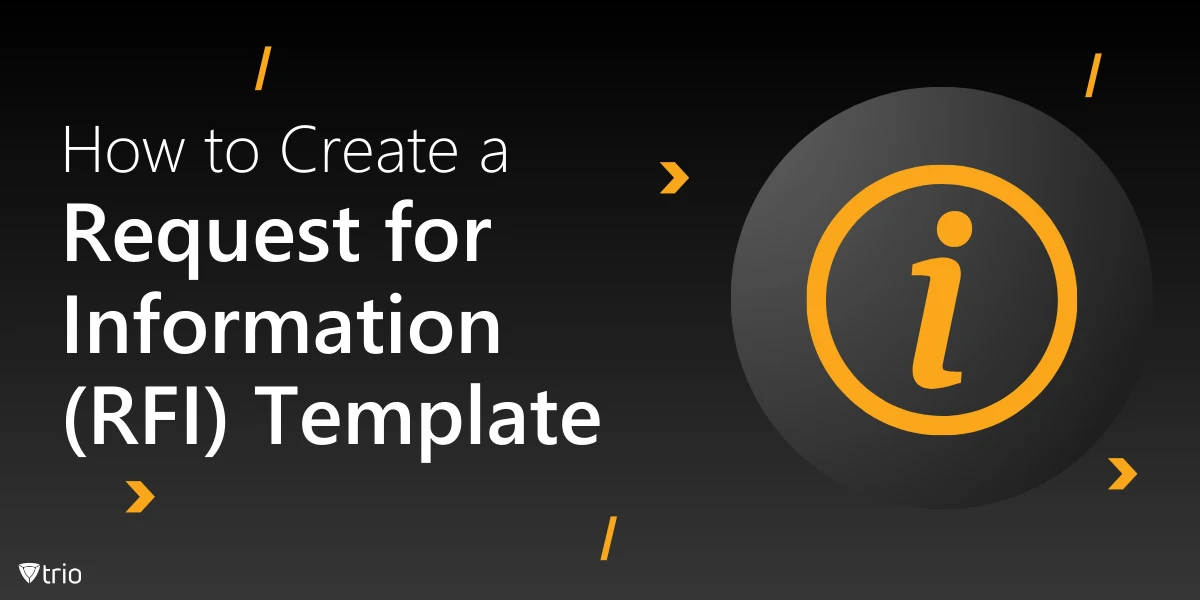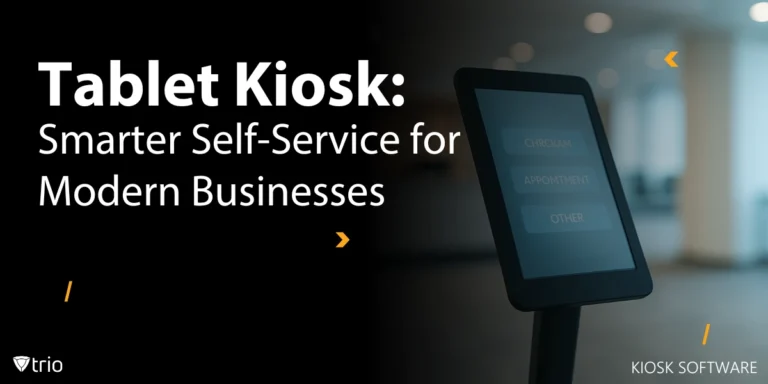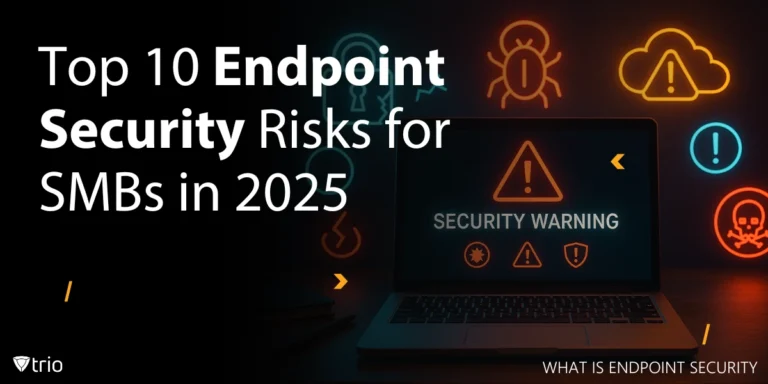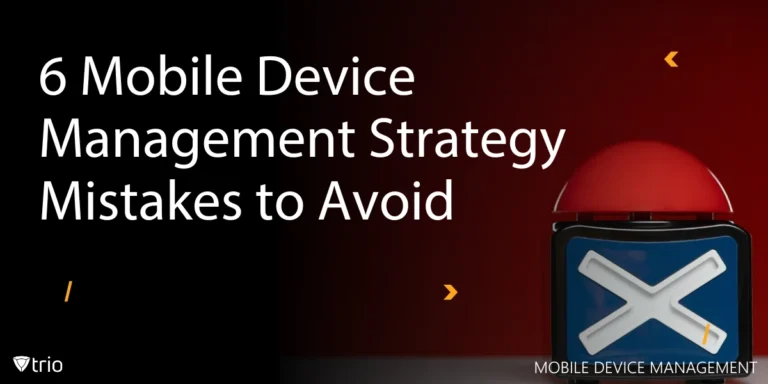In the fast-paced world of IT, making informed decisions about tools, services, or vendors is critical. A Request for Information (RFI) serves as a structured method for gathering essential details about potential solutions, enabling IT admins to evaluate options effectively. For organizations seeking clarity on complex technical requirements or market capabilities, an RFI can streamline the decision-making process.
Creating an effective RFI starts with understanding the scope of your needs and the criteria that matter most to your organization. By standardizing the process with a well-structured template, IT admins can save time, reduce ambiguity, and ensure consistency when engaging with vendors or service providers. This blog will walk you through what an RFI entails, its benefits, how to create a template, and how Mobile Device Management (MDM) solutions can play a role in the RFI process.
What is a Request for Information?
A Request for Information (RFI) is a formal document sent to potential vendors or service providers to gather information about their offerings. It is typically used in the early stages of the procurement process to help organizations understand what solutions are available and assess how well they align with business needs. Unlike a Request for Proposal (RFP), an RFI focuses on information gathering rather than pricing or contract specifics.
The RFI outlines the organization's requirements, asking vendors to provide detailed responses about their capabilities, product features, compatibility, and other relevant aspects. For IT admins, this could include inquiries about software security, scalability, integration capabilities, and support services. This process helps filter unsuitable vendors and narrows down the options before moving forward with more detailed evaluations.
One of the critical aspects of an RFI is its role in identifying potential risks and challenges associated with a solution. By gathering comprehensive information upfront, organizations can mitigate unforeseen issues and make better-informed decisions. Additionally, RFIs often foster transparency and accountability between vendors and clients, ensuring a mutual understanding of expectations.
Ultimately, an RFI serves as a foundational step in procurement, enabling IT admins to establish a clear picture of market offerings. Whether evaluating cloud solutions, hardware providers, or third-party services, RFIs can provide the critical insights needed to move forward confidently.
Benefits of Having an RFI Template
A standardized RFI template simplifies the process of creating and distributing RFIs, ensuring consistency and efficiency. For IT admins, this means spending less time drafting documents and more time analyzing responses from vendors. Templates also ensure that no critical details are overlooked, such as technical specifications or compliance requirements.
Another significant advantage of an RFI template is its ability to improve the quality of vendor responses. A well-structured template with clear questions and sections reduces ambiguity, encouraging vendors to provide detailed, relevant answers. This improves the overall accuracy and usefulness of the information collected, making comparisons between vendors easier and more objective.
Using an RFI template can also enhance collaboration among stakeholders. IT teams, procurement staff, and decision-makers can use a shared framework to define their requirements and review vendor responses. This consistency ensures that all parties are aligned, reducing the risk of miscommunication or conflicting priorities during the procurement process.
Finally, a template can speed up the evaluation process. By standardizing the format and structure of RFIs, IT admins can quickly identify critical differences between vendor offerings. This streamlined approach accelerates decision-making and helps organizations stay on track with project timelines.
Key Components of an RFI Template
A well-structured RFI template ensures consistency and comprehensiveness in the information-gathering process. The first critical component is the introduction, which provides an overview of your organization and the purpose of the RFI. This section should explain the project or problem at hand, the goals of the RFI, and how the vendor’s information will be used. For instance, if the RFI is for a cloud solution, mention the need for scalability, data security, and cost-efficiency.
The second component is the detailed requirements section. This part outlines the specific information you need from vendors. Organize requirements into categories like functionality, security, compliance, and support. For example, under functionality, you could ask vendors to describe their product's key features, integration capabilities, and scalability. Under security, include questions about encryption standards and data protection protocols. A comprehensive requirements section ensures vendors provide relevant and actionable information.
The vendor information section is equally important. This part requests details about the vendor’s background, experience, certifications, and client references. Ask for case studies or success stories that demonstrate the vendor’s ability to deliver solutions similar to your needs. Additionally, include questions about the vendor’s financial stability and technical support capabilities to ensure long-term reliability.
Finally, include a submission and next steps section. This part provides vendors with instructions on how to respond to the RFI, including deadlines, preferred formats, and contact details. Also, explain what happens after the RFI is submitted, such as evaluation timelines or the possibility of follow-up discussions. A well-defined submission section helps vendors align their efforts with your expectations and keeps the process efficient.
By incorporating these components into your RFI template, IT admins can streamline the information-gathering process and ensure a smooth evaluation of vendor responses.

How to Create a Request for Information Template
Creating a robust RFI template involves several steps:
- Define the Purpose and Scope: Start by clearly outlining the purpose of the RFI. Are you evaluating software, hardware, or services? Specify the problem you’re trying to solve, the goals of the RFI, and the types of information you need from vendors.
- Include an Introduction Section: Provide an overview of your organization and its goals. Include details about the project or initiative the RFI supports, so vendors understand the context of your request.
- List Detailed Requirements: Break down your needs into specific categories, such as functionality, security, scalability, and support. For example, if evaluating an MDM solution, include questions about device compatibility, remote management capabilities, and compliance standards.
- Create a Structured Question Format: Use open-ended and closed-ended questions to gather both qualitative and quantitative information. For example:
- Open-ended: “Describe your approach to integrating with third-party applications.”
- Closed-ended: “Does your solution support multi-factor authentication (Yes/No)?”
- Specify Submission Guidelines: Provide clear instructions for submitting responses, including deadlines, preferred formats, and contact details. This ensures vendors know how and when to respond.
- Include Evaluation Criteria: Share high-level evaluation criteria to help vendors tailor their responses. For instance, mention if your priority is scalability or cost-effectiveness.
- Add a Conclusion and Next Steps Section: End the template by thanking vendors for their participation and outlining the timeline for follow-ups or additional communication.
Download Our Free Request for Information Template
Download our free RFI template to streamline vendor evaluations and ensure consistency in your procurement process. It helps IT admins save time, gather relevant details efficiently, and make informed decisions with confidence.
Best Practices for Implementing RFIs
Implementing a Request for Information (RFI) effectively requires a structured and strategic approach. The first best practice is to clearly define the objectives of the RFI. Before drafting the document, identify what information you need, why you need it, and how it will inform your decision-making process. This ensures that your RFI is focused and avoids wasting time on unnecessary details. For example, if you’re evaluating a Mobile Device Management (MDM) solution, specify the key functionalities or compliance standards that are critical for your organization.
Another critical practice is to standardize the format and structure of your RFIs. Consistency across documents makes it easier for vendors to respond and for your team to evaluate responses. Use clear and concise language to avoid confusion, and group questions into logical categories, such as technical requirements, support, and scalability. Additionally, ensure that all RFIs adhere to a standard timeline, giving vendors enough time to provide comprehensive responses while keeping your project on schedule.
Effective communication is also essential. Share the RFI with all relevant stakeholders within your organization and ensure their requirements are incorporated. When distributing the RFI to vendors, provide clear submission instructions, including deadlines, preferred response formats, and the primary point of contact. Maintain an open line of communication with vendors to clarify any questions they might have, ensuring their responses align closely with your expectations.
Finally, establish a transparent evaluation process. Before distributing the RFI, define the criteria your team will use to assess vendor responses. This could include factors like cost, compliance, or integration capabilities. Once responses are received, use a scoring system to evaluate them objectively. Conduct follow-ups with vendors when necessary to clarify details or address concerns. This systematic approach ensures that the RFI process leads to well-informed, data-driven decisions.
How Mobile Device Management (MDM) Solutions Can Help with RFIs
Mobile Device Management solutions play a pivotal role in the RFI process, particularly when evaluating mobile or remote workforce solutions. These platforms often include built-in reporting and analytics tools, enabling IT admins to gather precise data about device usage, compliance, and performance. Such insights can inform the questions included in an RFI and ensure that responses align with organizational needs.
For example, MDM solutions can identify specific device configurations or security gaps that should be addressed by potential vendors. This allows IT admins to tailor their RFIs to focus on critical capabilities, such as encryption, device tracking, or remote wipe functionality. Vendors can then respond with detailed solutions, making it easier to evaluate their suitability.
Additionally, MDM platforms simplify collaboration during the RFI process. IT teams can share device data or usage reports with stakeholders, ensuring that everyone has a clear understanding of requirements. This centralized approach minimizes miscommunication and keeps the evaluation process on track.
Finally, MDM solutions enhance the security of the RFI process. By managing devices used for vendor communication, IT admins can enforce secure access policies, ensuring that sensitive information related to procurement is protected. MDM solutions also facilitate remote monitoring, enabling admins to maintain oversight throughout the process.
Conclusion
A well-designed Request for Information template empowers IT admins to gather detailed insights about potential solutions, improving the quality and speed of decision-making. By following a structured approach, organizations can ensure that no critical details are overlooked, fostering transparency and alignment among stakeholders.
For IT admins seeking to enhance their procurement processes, leveraging tools like MDM solutions can provide invaluable support. From gathering precise device data to maintaining secure communication, MDM platforms streamline every stage of the RFI process. Ready to simplify your IT operations? Try Trio’s free trial today for a powerful Mobile Device Management solution that streamlines procurement, security, and collaboration.
Get Ahead of the Curve
Every organization today needs a solution to automate time-consuming tasks and strengthen security.
Without the right tools, manual processes drain resources and leave gaps in protection. Trio MDM is designed to solve this problem, automating key tasks, boosting security, and ensuring compliance with ease.
Don't let inefficiencies hold you back. Learn how Trio MDM can revolutionize your IT operations or request a free trial today!





